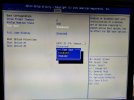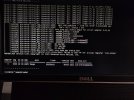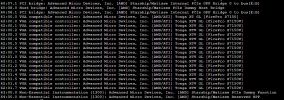Hello, I am finally posting after months of passively trying to get AMD vGPU to work. I have recently had a significant breakthrough and am able to actually see the virtual GPUs on my test system. Which is huge as I spent a weeks messing around with the original AMD GIM repo and trying to get it to compile on my system, to then discover that the old code does not compile on Kernel 5.00+. At the beginning of this journey I knew nearly nothing about Linux kernel modules, compiling or writing C++, or ensuring the correct BIOs settings were enabled. I tried to read every thread I could find on the s7150, GIM, and MxGPU. This has felt like trying to beat one of those seemingly insurmountable boss fights in a game, yet I have learned a ton so far.
Where I am at now as stated above is that I can see the virtual GPUs when I run
I am wondering if anyone has managed to navigate past this point?
Here are the system details:
Huananzhi ch8-x99
Intel(R) Xeon(R) CPU E5-2650 v3
Aspeed AST2400 system graphics
AMD s7150 FirePro
The verbose details of my error are as follows:
Where I am at now as stated above is that I can see the virtual GPUs when I run
lspci yet I get the following error at the bottom of the output:gim error init_register_init_state:3641) Failed to INIT PF for initial register 'init-state'I am wondering if anyone has managed to navigate past this point?
Here are the system details:
Huananzhi ch8-x99
Intel(R) Xeon(R) CPU E5-2650 v3
Aspeed AST2400 system graphics
AMD s7150 FirePro
The verbose details of my error are as follows:
Code:
- - - - AMD PCI-e devices - - - -
02:00.0 VGA compatible controller: Advanced Micro Devices, Inc. [AMD/ATI] Tonga XT GL [FirePro S7150]
02:02.0 VGA compatible controller: Advanced Micro Devices, Inc. [AMD/ATI] Tonga XTV GL [FirePro S7150V]
02:02.1 VGA compatible controller: Advanced Micro Devices, Inc. [AMD/ATI] Tonga XTV GL [FirePro S7150V]
02:02.2 VGA compatible controller: Advanced Micro Devices, Inc. [AMD/ATI] Tonga XTV GL [FirePro S7150V]
02:02.3 VGA compatible controller: Advanced Micro Devices, Inc. [AMD/ATI] Tonga XTV GL [FirePro S7150V]
02:02.4 VGA compatible controller: Advanced Micro Devices, Inc. [AMD/ATI] Tonga XTV GL [FirePro S7150V]
02:02.5 VGA compatible controller: Advanced Micro Devices, Inc. [AMD/ATI] Tonga XTV GL [FirePro S7150V]
02:02.6 VGA compatible controller: Advanced Micro Devices, Inc. [AMD/ATI] Tonga XTV GL [FirePro S7150V]
02:02.7 VGA compatible controller: Advanced Micro Devices, Inc. [AMD/ATI] Tonga XTV GL [FirePro S7150V]
[ 7.583546] gim error:(wait_cmd_complete:1683) wait_cmd_complete -- time out after 3.000075060 sec
[ 7.583579] gim error:(wait_cmd_complete:1692) Cmd = 0x17, Status = 0x0
[ 7.583600] gim error:(dump_gpu_status:1417) **** dump gpu status begin for struct adapter 2:00.00
[ 7.583652] gim error:(dump_gpu_status:1457) mmGRBM_STATUS = 0x3028
[ 7.583676] gim error:(dump_gpu_status:1460) mmGRBM_STATUS2 = 0x8
[ 7.583716] gim error:(dump_gpu_status:1463) mmSRBM_STATUS = 0x20000040
[ 7.583734] gim error:(dump_gpu_status:1466) mmSRBM_STATUS2 = 0x0
[ 7.583751] gim error:(dump_gpu_status:1469) mmSDMA0_STATUS_REG = 0x46dee557
[ 7.583769] gim error:(dump_gpu_status:1472) mmSDMA1_STATUS_REG = 0x46dee557
[ 7.583793] gim error:(check_me_cntl:1388) ME HALTED!
[ 7.583807] gim error:(check_me_cntl:1391) PFP HALTED!
[ 7.583821] gim error:(check_me_cntl:1394) CE HALTED!
[ 7.583835] gim error:(dump_gpu_status:1588) **** dump gpu status end
[ 7.583852] gim error:(init_register_init_state:3641) Failed to INIT PF for initial register 'init-state'
AMDVBFLASH version 4.69, Copyright (c) 2020 Advanced Micro Devices, Inc.
adapter seg bn dn dID asic flash romsize test bios p/n
======= ==== == == ==== =============== ============== ======= ==== ================
0 0000 02 00 6929 Tonga GD25Q41B 80000 pass 113-C76720NOSRIOV
- - - - - - - - - - - - - - - - -
Last edited:





